At A Glance
Holiday shopping in 2025 doesn’t follow one clear pattern, with shoppers blending early planning and last-minute purchases, digital discovery and in-store validation, and cautious spending. Marketers who embrace this complexity, by staying relevant, consistent, and connected across channels, will be best positioned to win this season.Holiday shopping in 2025 feels a lot like a complicated relationship. Shoppers want deals, but they also want trust. They start shopping early, but they’re still browsing well into December. They love the convenience of online shopping, but they still show up in-store before making the final call.
Our 2025 Holiday spending trends and insights report, created this year in collaboration with GroundTruth, explores these contradictions. Our findings show that this year’s holiday season isn’t about one big shift; it’s about managing the push and pull between what consumers say, what they do, and how marketers respond.
Here are three complicated truths you need to know.
Experian’s 2025 Holiday spending trends and insights report
Optimize your 2025 holiday shopping campaigns with our latest report with GroundTruth.
Download now1. The new rules of holiday timing
Almost half (45%) of consumers plan to start shopping before November, but 62% admit they’ll still be buying in December. And post-holiday shopping (think gift card redemptions and deal-hunting) remains a real factor.
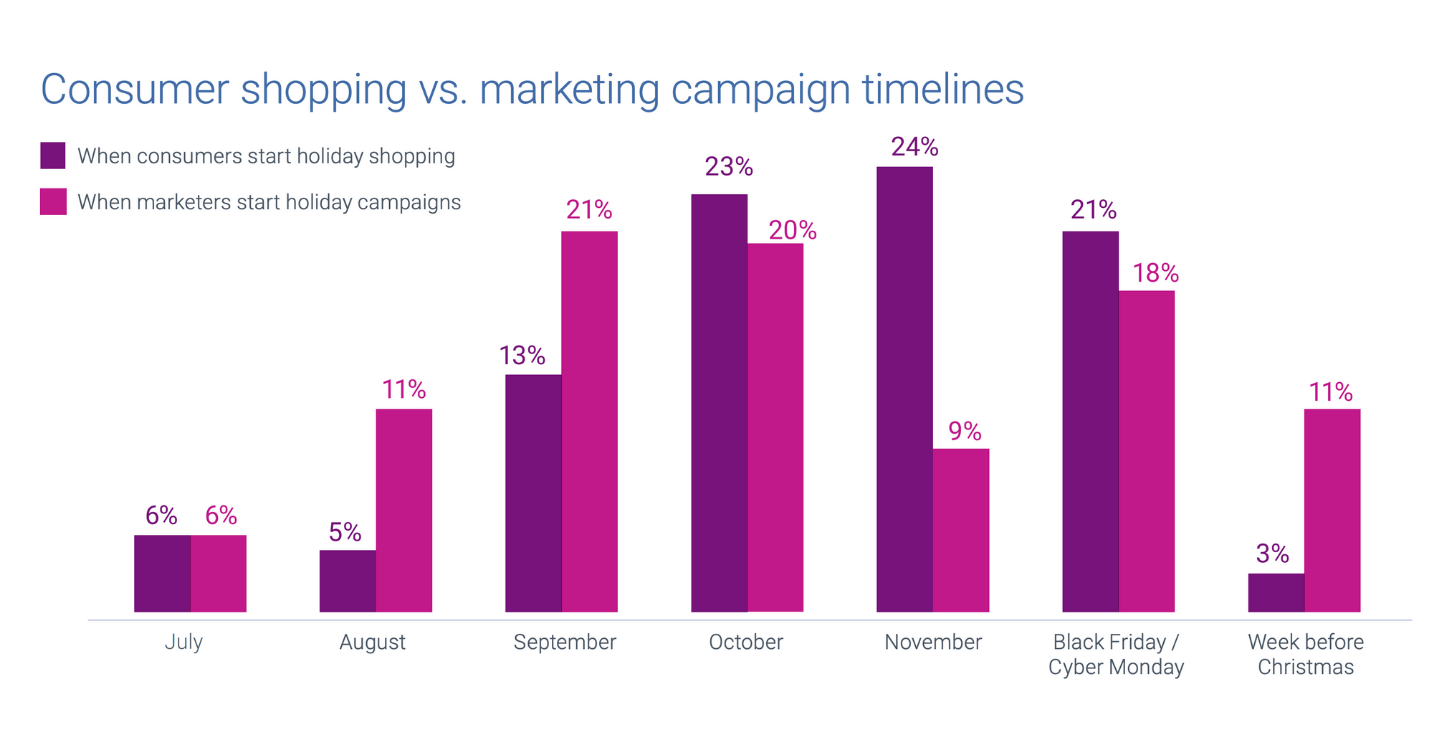
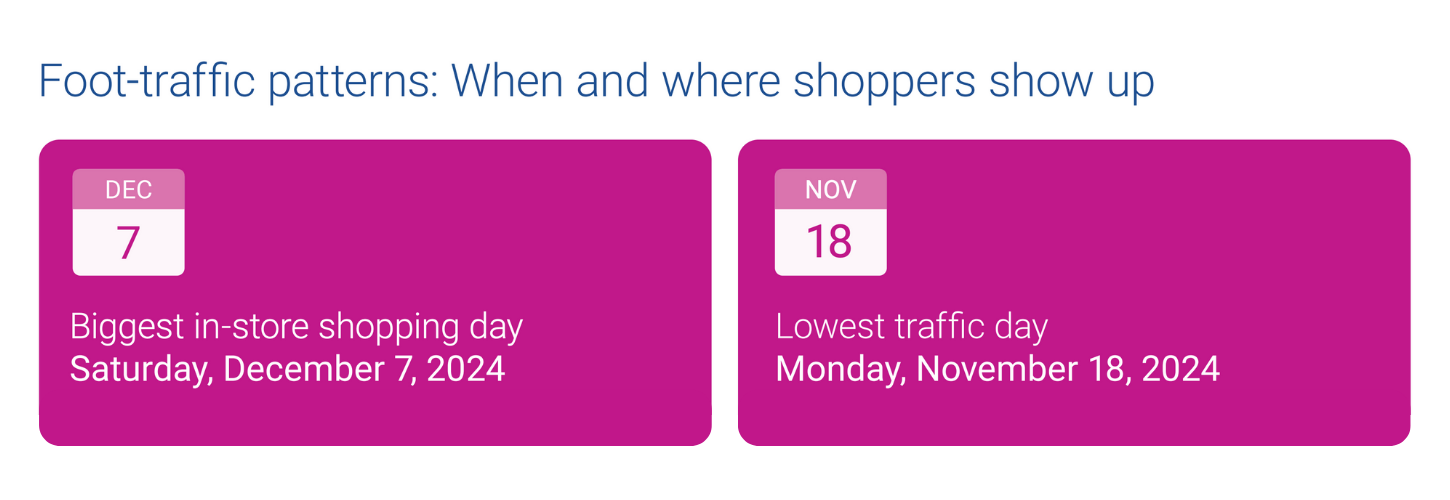
Why it’s complicated
The holiday calendar isn’t what it used to be. There’s no single “big moment” anymore. Instead, shoppers are spreading purchases across months, peaking around the “Turkey 12” (the 12 days surrounding Thanksgiving) and again in the final December rush.
What to do about it
- Stretch your campaigns across the full season, not just Cyber Week.
- Refresh offers to stay relevant as shopper motivations change from deal-seeking to last-minute urgency.
- Watch for post-holiday momentum and extend your promotions into January.
How belVita nailed the timing
In celebration of National Coffee Day, belVita partnered with GroundTruth on a one-month campaign to boost product awareness and drive foot traffic to Target stores. By utilizing digital out-of-home (DOOH) and mobile ads powered by location, behavioral, and purchase-based targeting, the campaign achieved a 3.44% visitation rate, nearly $476k in products added to carts, and a low cost-per-visit of just $0.22.
2. Online leads, but in-store still seals the deal
Nearly 40% of shoppers say they’ll split their purchases between online and in-store and 80% of consumers still prefer the in-store experience. Only a small fraction plan to shop exclusively in one channel. That means while digital often starts the journey, the final decision often happens in a physical store.
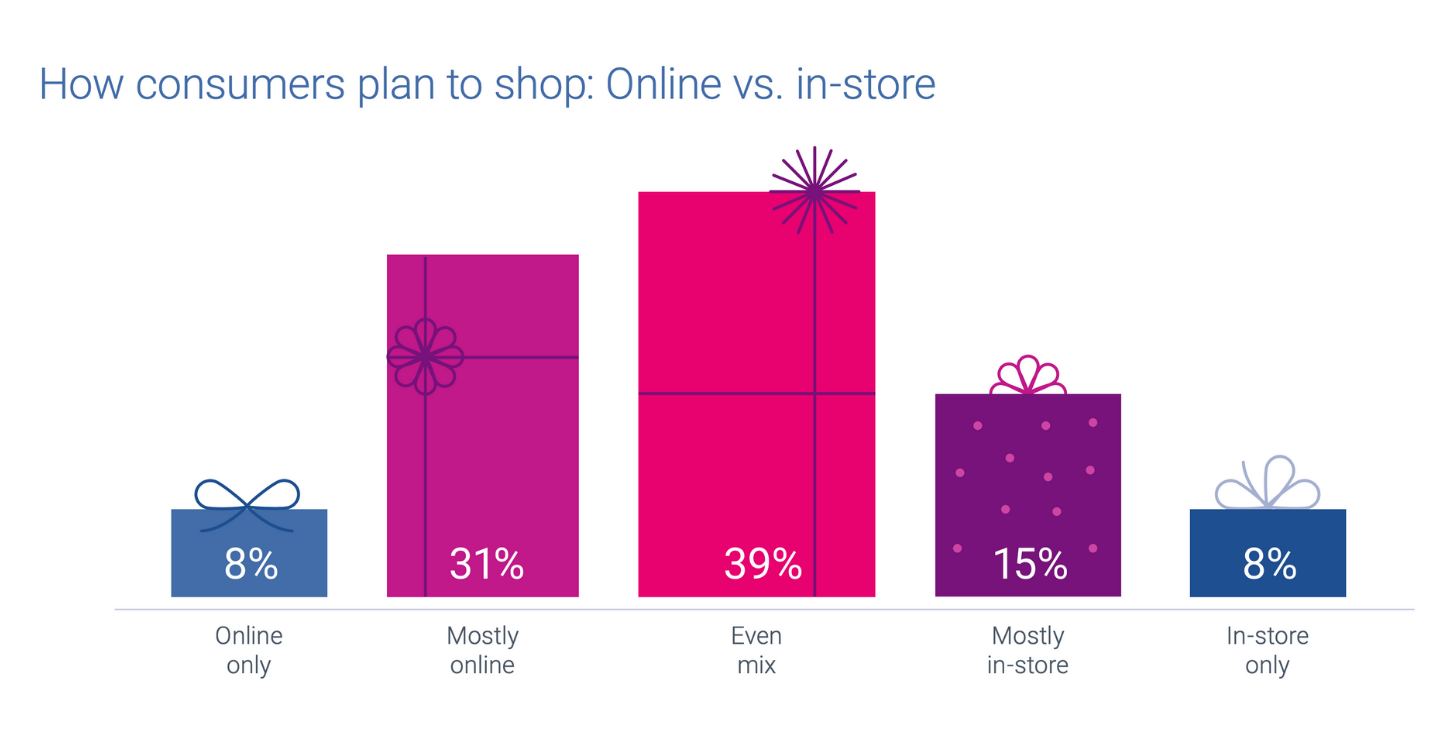
Why it’s complicated
Shoppers love the convenience of browsing online, but they still want the reassurance of seeing, touching, or testing products before buying. In-store isn’t just about the transaction, it’s the validation step.
What to do about it
- Build omnichannel strategies that connect digital discovery with in-store follow-through.
- Use location and identity data to tie digital impressions to real-world actions, like foot traffic and purchases.
- Focus on consistency: shoppers expect the same value, tone, and trust whether they’re on a website, in an app, or standing in a store aisle.
How Duke Cannon used on-premise targeting to drive sales lift
Duke Cannon, a premium men’s grooming brand, partnered with GroundTruth to launch a successful multichannel campaign utilizing location-based and behavioral audience targeting across CTV and mobile screens to drive in-store visits and sales.
By targeting consumers with mobile ads while they were physically in-store, the company capitalized on high purchase intent, aiding in the 12% sales lift. This strategic approach resulted in over 43.9k provable in-store visits and a significant increase in sales.
3. Marketers double down, consumers hold back
This holiday season, expectations are split. 66% of marketers expect holiday spend to rise, but only 22% of consumers agree. While brands are leaning into bigger investments across CTV, retail media, and social, shoppers are staying cautious, weighing value and waiting for the right deal.
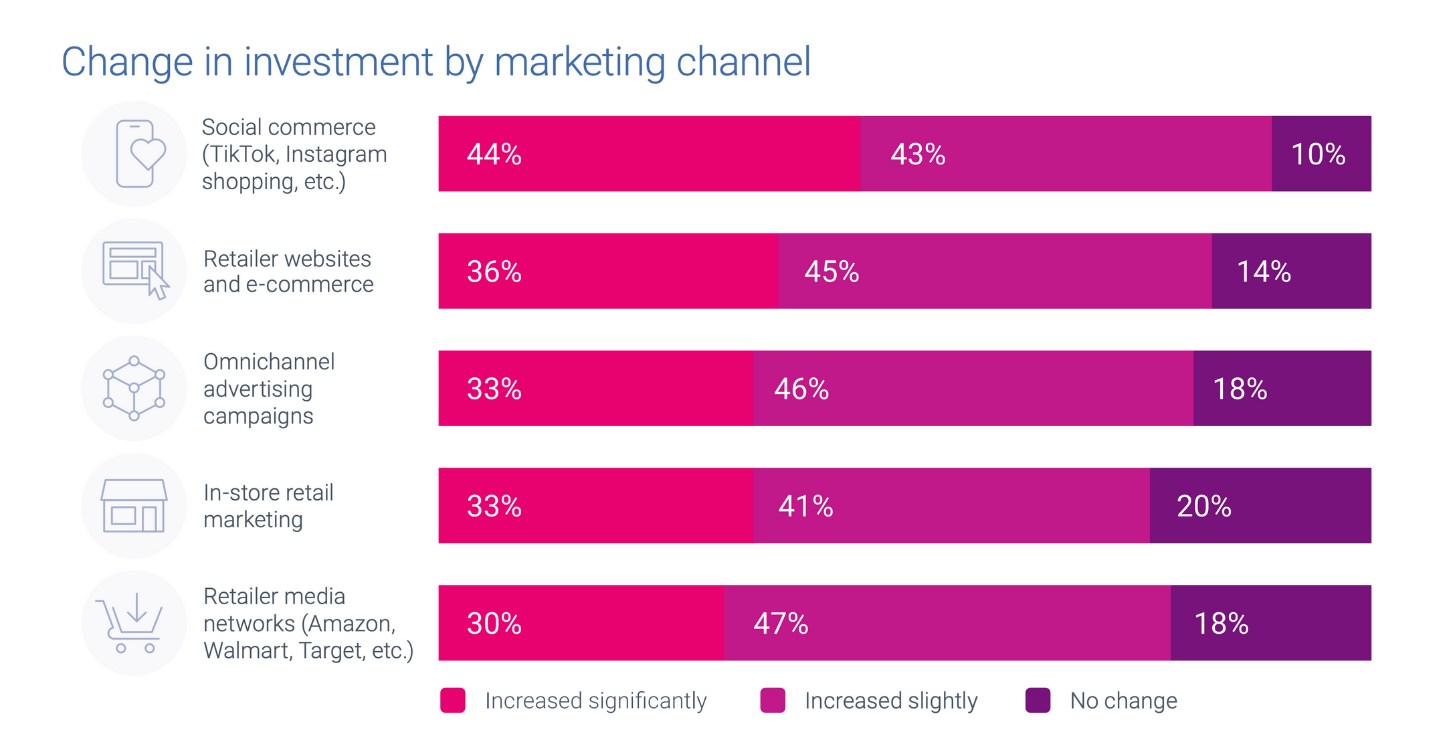
Why it’s complicated
That disconnect introduces risk. If marketers don’t align spend with real consumer behavior, budgets can get wasted in the rush to cover every channel. Shoppers haven’t stopped spending, but they’re spending differently. They’re trading down to discount and big-box retailers while cutting back in discretionary categories like apparel and restaurants.
What to do about it
- Prioritize efficiency by focusing on the right audiences, not just more impressions.
- Make consistency your advantage: reach people once and connect across platforms instead of chasing fragmented signals.
- Balance aggressive media investment with messaging that acknowledges consumer caution — shoppers want value and trust, not hype.
Measuring TV and streaming impact with iSpot
iSpot’s Audience Builder, powered by Experian’s Marketing Attributes, helps brands reach high-value audiences. During the holiday season, a luxury retailer could target $100K+ households with affluent lifestyle interests. With iSpot’s Unified Measurement platform, they can track performance across linear TV and streaming and shift spend in real time to maximize results.
The bottom line on 2025 holiday shopping trends
This year’s holiday shopping season is, well…complicated. Shoppers are cautious but still engaged. They’re early planners and last-minute browsers. They want the ease of digital, but the confidence of in-person.
For marketers, the opportunity lies in embracing that complexity, not trying to simplify it away. The brands that balance relevance, trust, and convenience across the full season and across every channel will be the ones that win.
Download our full 2025 Holiday spending trends and insights report to explore all five shifts shaping this season and see how you can turn complexity into opportunity.
About the author

Fred Cheung
Director, Partnership Sales, Audigent, a part of Experian
Fred Cheung has spent over a decade in the programmatic advertising space, with roles at Mindshare, Jounce Media, Twitter, and The Trade Desk. His deep experience in trading and product management helps in his current function on the Experian Marketing Services’ Sales team where he focuses on data growth and adoption across the industries’ leading buy-side platforms.
2025 holiday shopping trends FAQs
Because consumer behavior is full of contradictions. People will shop earlier but also later, browse online but purchase in-store, and want deals while demanding trust. Marketers need to navigate these push-and-pull dynamics.
Nearly half (45%) say they’ll start before November, but 62% admit they’ll still be buying in December, with momentum even continuing into January through gift card redemptions and deal-hunting.
Although many consumers begin online, the majority still make their final decisions in-store. In-person shopping acts as a validation step where customers can see, touch, or try products before buying.
Instead of focusing only on Black Friday or Cyber Week, marketers should stretch campaigns across the full season, refresh offers frequently, and continue promotions into January.
Not entirely. 66% of marketers expect spending to rise, but only 22% of consumers agree. Shoppers are cautious, prioritizing value and often trading down to discount or big-box retailers.
An omnichannel approach using identity and location data can bridge digital impressions with real-world actions like store visits and purchases, ensuring consistency across touchpoints.
Brands like belVita and Duke Cannon successfully tied digital campaigns to in-store results by utilizing precise audience targeting, location data, and well-timed promotions.
You can download Experian’s 2025 Holiday spending trends and insights report to explore all five shifts shaping this season.
Latest posts

Agencies, platforms, and marketers stand at the crossroads of transformation, as privacy regulations tighten, technology accelerates, and consumer behaviors evolve. Yet these challenges also present extraordinary opportunities. Our 2025 Digital trends and predictions report highlights five trends that will shape 2025 and digs into: What’s changing in the market How to keep learning about your customers How to reach your customers in different places How to measure what’s really working along the way In this blog post, we’ll give you a sneak peek of three of these trends — from cracking the code of signal loss to tapping into the buzz around connected TV (CTV) and stepping up your omnichannel game. Think of it as a taste test before the main course. Ready for the full menu? Download our report to get the lowdown on all five trends. Download now 1. Signal loss: A rich appetizer of alternate ingredients As traditional cookies crumble, marketers need fresh ingredients to keep the flavor coming. Already, about 40% of browser traffic doesn’t support third-party cookies, and marketers are spicing things up with first-party data, alternative identifiers like Unified I.D. 2.0 (UID2) and ID5, and contextual targeting strategies. In fact, 50% more of our clients received alternative IDs (UID2, ID5, Hadron ID) in their Digital Graph in 2024 compared to 2023. The number of alternative IDs resolved to individuals in our Digital Graph increased by 30% year-over-year – as everyone looks beyond the cookie jar. There is no secret sauce to replace cookies. Instead, expect a multi-ID recipe that brings together different identifiers, unified by an identity graph. This approach turns a fragmented pantry of data into a cohesive meal, giving you a complete view of your customer on every plate. 2. The rising power of CTV: A hearty entrée of opportunities CTV is quickly becoming the main dish on the streaming menu, as viewers load up on their favorite shows. While CTV is slated to make up 20% of daily U.S. media consumption by 2026, advertisers are still holding back on pouring in the ad spend. To unlock its full flavor, marketers need to whip up solutions like frequency capping and unified audience activation. Although CTV will account for 20% of daily U.S. media consumption by 2026, it’s projected to command only 8.1% of ad spend. Frequency capping and unified audience activation solutions will be key to unlocking CTV’s full potential. By 2025, nearly half of CTV "diners" will choose free ad-supported streaming TV (FAST). Marketers need strategies to prevent ad overexposure. With 50% of U.S. consumers avoiding products due to ad overload, and 30% of marketers willing to increase their CTV spend if frequency capping improves, unified identity solutions help ensure every impression is served just right. 3. Omnichannel: A flavorful fusion plate No one likes a one-flavor meal. Marketers are moving beyond single-channel “side dishes” to omnichannel “fusion feasts” that blend direct mail, digital, CTV, and retail media networks (RMNs) into a truly cohesive culinary experience. Even though only 21% of global B2C professionals currently put omnichannel at the top of their shopping list, the growing demand for seamless, audience-first campaigns is heating up. In 2025, having an audience-first approach will be like having a perfect pairing for every course. Unified identity solutions act as your master sommelier, ensuring that each channel complements the next, and every customer enjoys a well-rounded, memorable journey. Vertical trends: A dessert sampler from four unique kitchens Different markets have their own signature flavors. In Auto, crossover utility vehicles (CUVs) claim 51% of new vehicle registrations, and consumers in the 35-54 age group and families are the primary buyers. Automotive marketers should prioritize CUV advertising with a strong focus on family-oriented and income-appropriate messaging In Financial Services, marketers need to anticipate shifts in consumer behavior tied to economic conditions, such as increasing demand for deposit products when interest rates are high. For insurance, aligning campaigns with life events, like new home purchases or marriage, can maximize engagement. In Healthcare, advertisers are prioritizing personalized, regulation-compliant campaigns that address social determinants of health (SDOH). In Retail, advertisers are increasingly activating on both CTV and social platforms, with many managing their own in-house campaigns. While larger brands often rely on media agencies, a shift toward in-house media buying is emerging among some bigger players, offering more control over audience targeting and performance metrics. Our report covers each vertical’s unique menu, helping you select the right “ingredients” for your customers. With the top Experian Audiences on hand, you can create feasts that delight, nourish, and convert. Download our new 2026 Digital trends and predictions report Marketing in 2026 will be defined by connection: between activation and measurement, data and AI, platforms and outcomes. These connections are what turn innovation into impact, and they’re where Experian helps marketers lead with confidence. What you'll learn AI is only as good as its data : Find out why the marketers who shape how AI works, with high-integrity, human-centered data, will be the ones who lead. Activation and measurement are coming together: Explore how marketers are shifting from reporting after the fact to guiding performance in the moment. First-party data activation is becoming a foundational capability: See how it’s now possible to onboard and activate privacy-compliant audiences across channels, all from a single system. Commerce media is no longer just a retail play: Understand why auto, CPG, financial services, and travel brands are now adopting retail-style models to connect data, media, and sales outcomes. Curation is the new programmatic standard: Learn how curation brings identity, quality, and control together, allowing marketers to target confidently across connected TV (CTV), audio, and the open web. Download now Experian's U.K. 2025 advertising trends This article highlights the major advertising trends set to shape the U.S. market in 2025, but significant industry changes are happening on a global scale. For a more comprehensive look at worldwide trends, check out Experian's U.K. 2025 advertising trends. Read now Contact us Latest posts

Swiss Sense’s mission is to provide exceptional sleep comfort for all. The European retailer analyzed their customer data in one market to better understand their ideal customer profile and scale these learnings to other markets. To achieve this, Swiss Sense used Experian’s Mosaic® data, a profiling tool that segments households into categories based on their lifestyle, interests, and demographics. Using Mosaic data, Swiss Sense identified key customer personas and tailored their communications to match. Partnering with Experian, they created personalized product recommendations and delivered targeted messaging through direct mail, out-of-home (OOH) advertising, and leafleting campaigns. What is Mosiac? Experian’s Mosaic data helps businesses understand their customers better by grouping households into segments based on their lifestyles, interests, and financial situations. It gives marketers a clear picture of who their customers are, so they can create more targeted campaigns. Challenge: Utilize data-driven insights to drive market-specific growth strategies Swiss Sense wanted to expand its presence across all of its markets. To achieve this, they analyzed customer data in the Netherlands to identify their ideal customer profiles and replicate their success in other regions. Their objectives included: Develop regional strategies Integrate data-driven insights into their local and international marketing strategy The solution to achieve data-driven marketing Swiss Sense saw that Experian could provide a data-driven view of customers in other countries using both Global and local Mosaic profiles. They chose Experian as their partner to ensure a persona-based segmentation across multiple countries. This partnership allowed Swiss Sense to: Gain consistent customer insights across all operational markets. Equip marketing and operational teams with precise data for targeting and personalization. Drive adoption of the segmentation strategy by giving end users access to a bespoke dashboard with the data. Results: Driving targeted marketing and personalized experiences with Mosiac By partnering with Experian, Swiss Sense was able to seamlessly implement a solution tailored to their unique needs. Swiss Sense gained an overview of its customer base while using the more granular Mosaic data in each country to gain the optimal understanding of each region’s customers. These insights helped Swiss Sense’s marketing team, allowing them to craft targeted customer content, suggest relevant imagery, and adopt the right tone of voice. Identifying key Mosaic growth segments further enabled Swiss Sense to focus marketing efforts on regions and cities over-indexing for their ideal customer types. This led to the execution of highly targeted offline campaigns, including: Direct mail flyers delivered to target audiences’ homes OOH advertising in cities where key segments over-index Distributing leaflets in public places such as target town centers Download our case study for the full details of Swiss Sense’s journey to international growth. Download the full case study now Contact us About Swiss Sense Founded by the Diks family in 2006, Swiss Sense is a Dutch family-owned retailer specializing in high-quality beds, mattresses, and bedroom accessories. With over 2,000 employees and stores across multiple European countries, Swiss Sense is dedicated to providing exceptional sleep comfort for all. To learn more, please visit www.SwissSense.nl. Latest posts
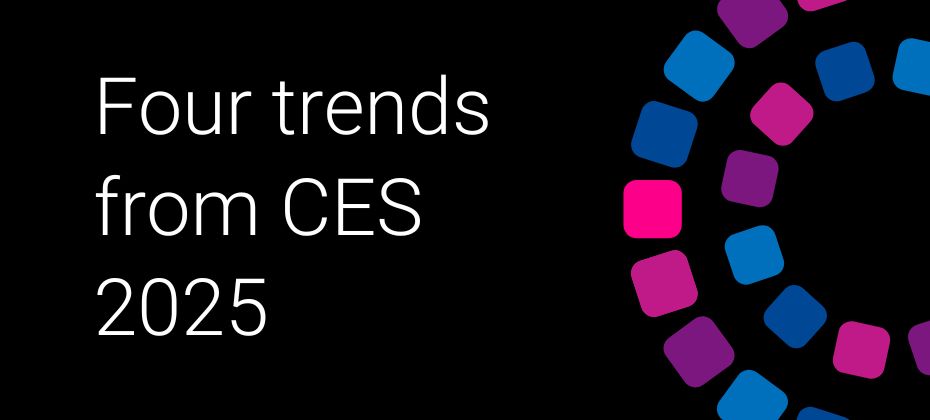
Every year, the Experian team attends the Consumer Electronics Show (CES) in Las Vegas to study the latest technological advancements and innovations that shape the AdTech industry. The energy at CES 2025 was palpable, with a whirlwind of conversations around artificial intelligence (AI), connected TV (CTV), privacy-first solutions, and sustainability in advertising. Here are four standout themes from this year’s event. 1. The AI evolution: More buzzwords, but growing potential AI dominated discussions this year, but the gap between hype and practical application was still evident. While some vendors showcased innovative tools for campaign optimization and audience creation, much of the buzz felt aspirational. The use of AI to generate audiences based on new types of data is a promising sign of things to come. Data providers, including those collaborating with Experian, are beginning to test AI tools to enhance audience accuracy and scale. The AI space still feels frenetic, but the potential for transformative change is undeniable. "AI was a hot topic, with discussions ranging from campaign optimization tools to audience selection. While many leaned on buzzwords, there were glimpses of legitimate use cases."Brooke Logan, VP of Data Strategy and Partnerships 2. CTV: A race for quality and curation CTV remained a popular topic at CES, particularly around the challenges of fragmentation and scale. Sellers are grappling with an oversupply of inventory, leading to a renewed focus on curation. Conversations highlighted the importance of premium audiences, brand safety, and identity resolution. In the fragmented CTV landscape, advertisers want to be able to define an audience once, have that audience be highly addressable, and then activate everywhere. One standout theme was the shift in CTV monetization strategies. With linear TV revenues declining, major publishers are exploring ways to maximize yields on streaming platforms. Direct-sold premium inventory still reigns, but programmatic is gaining traction—a trend we’re seeing driven by publishers seeking scalable solutions. "CTV remains fragmented. While premium inventory is largely direct-sold, big publishers are exploring ways to boost yield on streaming as linear revenue declines."Lauren Portell, Sr. Account Executive, Advanced TV 3. Privacy-first solutions The regulatory landscape continues to evolve, and advertisers are responding with innovative, privacy-centric methodologies. For industries like healthcare, privacy-first solutions are being developed from the ground up to comply with current and future regulations. The emphasis on cookieless and contextual advertising remains strong, with data providers utilizing first-party data to enrich audience targeting strategies. "Providers across verticals that are typically more sensitive are developing methodologies from the ground up based on current and future potential privacy regulations."Adam Kobus, Director of Data Partnerships 4. Eco-conscious advertising: Building a sustainable future Sustainability emerged as a growing focus, as indicated by initiatives like Scope3 and Experian’s own carbon reduction goals. Companies are exploring ways to reduce the environmental impact of ad serving and data management. For example, platforms like AdGood are transforming unused CTV inventory into opportunities for non-profit initiatives. While not strictly eco-focused, these efforts signal a shift toward more conscientious advertising practices. "Sustainability is gaining attention, with efforts to reduce the carbon footprint through eco-conscious advertising, data management practices, and ad serving."Erin Wolf, Sr. Account Executive, Demand Partnerships The buzz around Experian The launch of the Experian marketplace and the Audigent acquisition were major talking points, underscoring Experian’s commitment to innovation in AdTech. Together, Experian and Audigent will be an end-to-end solution where publishers big and small can empower marketers to better understand their customers, create precise audience segments, and activate those audiences across the best inventory. Likewise, Experian’s new data marketplace connects TV operators, programmers, supply partners, and demand platforms with top-tier third-party audiences across retail, CPG, health, B2B, and location intelligence. All audiences delivered from our marketplace benefit from our best-in-class offline and digital identity graphs, which ensure addressability across all channels like display, mobile, and CTV. An exciting year ahead CES 2025 underscored the rapid evolution of the advertising ecosystem. From AI to CTV and privacy-first solutions, the industry is adapting to new challenges and opportunities. As Experian continues to lean into these trends, our role in powering data-driven advertising through connectivity remains more focused than ever. We’re excited to see how these themes will evolve throughout the year and look forward to collaborating with our partners to shape the future of digital advertising. Follow us on LinkedIn or sign up for our email newsletter for more informative content on the latest industry insights and data-driven marketing. Contact us Latest posts